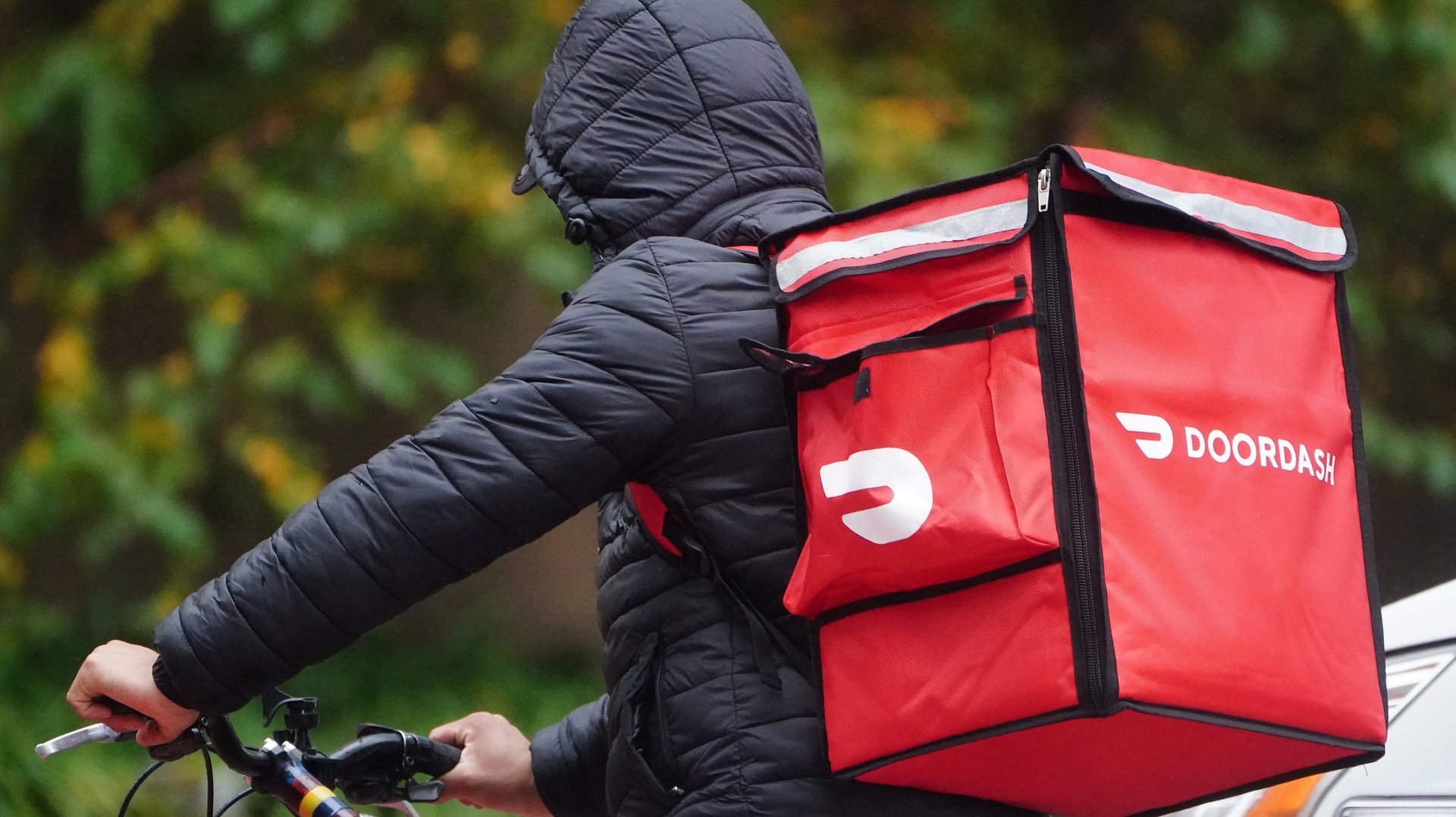DoorDash’s hourly pay policy is flexible in all the wrong ways
The Earn By Time mode only counts time spent on active orders

A new earning model DoorDash introduced yesterday (June 28) will pay gig workers an hourly wage, but there’s a catch: The minutes adding up to a hour must be spent actively on the job. Waiting for orders, apparently, isn’t part of it.
Suggested Reading
The California-based company, which so far paid workers per order like much of the rest of its industry, added another pay option—Earn by Time—that assures delivery personnel of “a guaranteed hourly minimum rate for time spent on a delivery.” But just being online on the app and available to make deliveries won’t cut it. DoorDash defines “time spent on a delivery” as the period between accepting an offer and dropping it off.
Related Content
Without paying for waiting time, the Earn by Time model effectively becomes a way to pay delivery drivers per order, while incentivising taking on as many jobs as possible—DoorDash would presumably receive complaints or spot those trying to unnecessarily delay a delivery to accrue time. Every order has estimated arrival time, and riders get a contract violation if they’re excessively late.
The company’s announcement on Earn by Time also lacked a critical detail: the actual amount of the minimum hourly wage on offer.
The problem with DoorDash’s “hourly” rate calculations
DoorDash says the new model gives drivers more flexibility and agency over their earnings—reminiscent of the arguments big delivery companies like Uber and Lyft made during the vote on the controversial Prop 22 law in 2020, the priciest ballot initiative in California history at the time, which allows apps to classify gig workers as independent contractors instead of employees. (A California appeals court upheld Prop 22 this March, but the Supreme Court will soon hear an appeal from app-based drivers hoping to strike down the ruling.)
DoorDash only counts time spent on-duty, the hourly pay structure could get workers to accept smaller deliveries they would have skipped to “push as many orders as they can,” Sergio Avedian, a longtime driver and a contributor to The Rideshare Guy, a blog that doles out tips to gig drivers, told the New York Times. But that’s not all. Drivers on Earn by Time cannot reject order offers. Declining or unassigning more than one order per hour will lead to the Earn by Time dash automatically ending.
Moreover, some benefits like priority access to high-paying priority, where Dashers with a customer rating of at least 4.5 and an acceptance rate of at least 50%, aren’t available in the Earn By Time mode.
DoorDash encourages Dashers to make more, better deliveries
Alongside Earn by Time, DoorDash introduced two new features that attempt to incentivize drivers to fulfil more orders.
🏍️ Dash Along the Way. This new DoorDash feature lets its so-called Dashers work during commutes on their way to the zones where they work, helping them “reduce downtime and maximize efficiency on the road,” the company said. It is an earning opportunity that also improves DoorDash’s delivery numbers.
💵 Post-checkout tipping. Customers can “reward Dashers for excellent service” by adding a tip, or increasing an existing one, up to 30 days after delivery.
DoorDash deliveries, by the digits
13 million: Delivery drivers who have been working with DoorDash
$2 to $10: Dasher’s “offer” in the existing pay-per-delivery system, which is determined by distance, duration, and desirability of the order.
$10 to $19.50: Minimum compensation a Dasher can expect per hour, depending on the region and range, according to DoorDash. The company said those being paid hourly and those being paid per offer will earn a similar compensation. Drivers can toggle between hourly and per-delivery pay as often as they want.
Place of interest: New York
Starting in July, New York City mandates that its 60,000-plus food delivery workers, who earn less than $8 an hour working with app-based services, are guaranteed a minimum $18 hourly pay. By April 2025, they’ll be paid closer to $20 per hour.
The likes of Uber and DoorDash objected to the law, saying it would alienate casual users that deliver on the apps part-time and drive up costs for customers.
The new hourly earning system will not be used in New York, or in other cities like California and Seattle, who have passed minimum wage laws for delivery workers.
Related stories
🤑 Uber and DoorDash found a way to make food-delivery profitable
